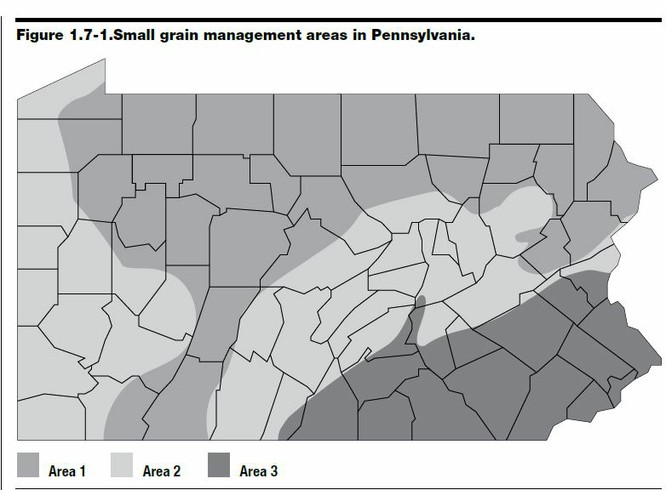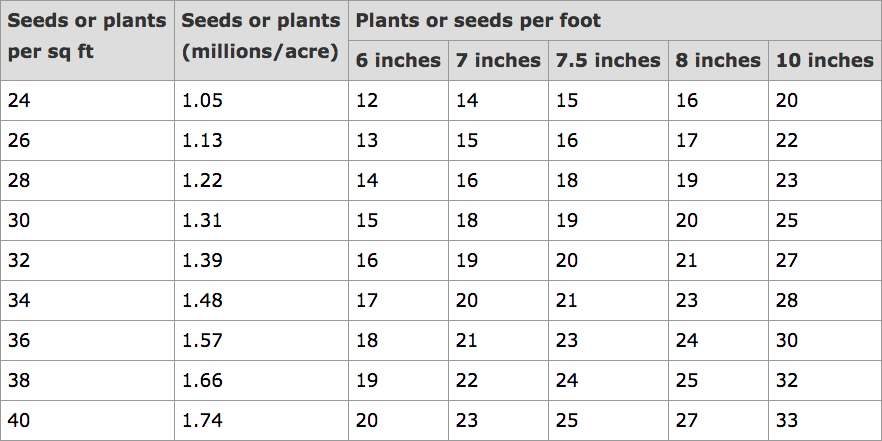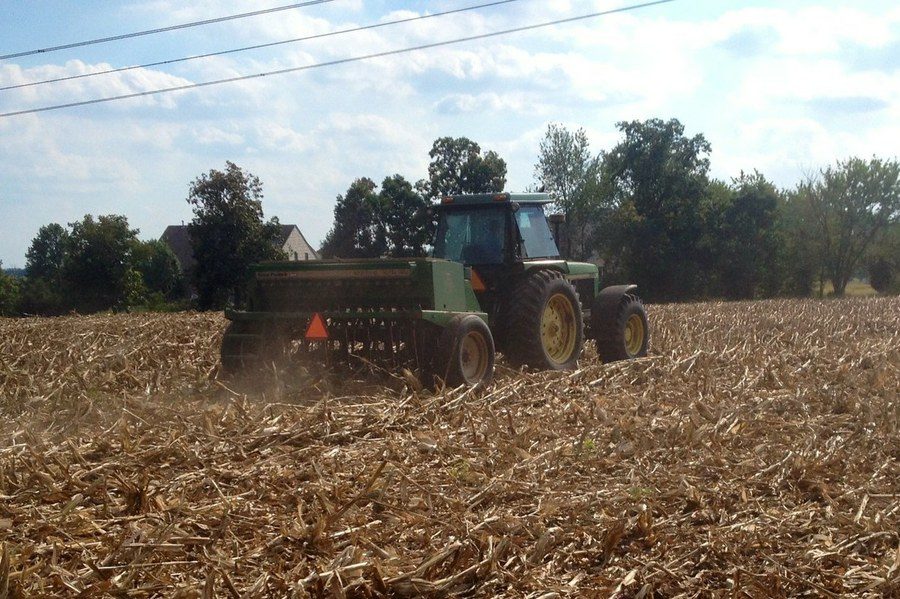By Andrew Frankenfield, Agricultural Educator
The early harvest of corn and soybeans should allow for timely seeding of small grains this fall. The desirable plant population for wheat is 1.3-1.5 million plants per acre (28-34 plants per square foot). This requires a seeding rate between 1.5 and 1.7 million seeds per acre, or 20-23 seeds per foot in a 7-inch row. Use lower rates in area 3 (Southeastern Pennsylvania) and higher rates in area 1. See figure 1.7-1 for small grain management areas in Pennsylvania.
The seeding rate should be based on the number of seeds per acre rather than pounds per acre. Refer to Table 1.7-3 in the Penn State Agronomy Guide when estimating the appropriate seeding rate for various drill row spacings.
Seeding rates shown in Table 1.7-3 are adequate if you are seeding under ideal conditions; increase these rates when seeding under poor conditions, such as a cloddy seedbed or delayed planting date. When seeding more than 2 weeks following the Hessian fly-free date, increase the seeding rate by 10% for each week delayed past that date. Do not delay seeding winter wheat because of dry soil.
For more information on small grain production and management, visit Penn State Extension’s Small Grains website. You can also refer to Penn State Agronomy Facts 75, Calibration of Grain/Seed Drills for more information.
 Table 1.7-3. Small grain seed or plant densities expressed on a basis of square foot, plants per acre, or seeds per foot. (For example, assuming 85% emergence, a target population of 1.3 million plants per acre would require 1.5 million seeds per acre, or 20 seeds per foot of 7-inch row.)
Table 1.7-3. Small grain seed or plant densities expressed on a basis of square foot, plants per acre, or seeds per foot. (For example, assuming 85% emergence, a target population of 1.3 million plants per acre would require 1.5 million seeds per acre, or 20 seeds per foot of 7-inch row.)







Post a comment
Report Abusive Comment